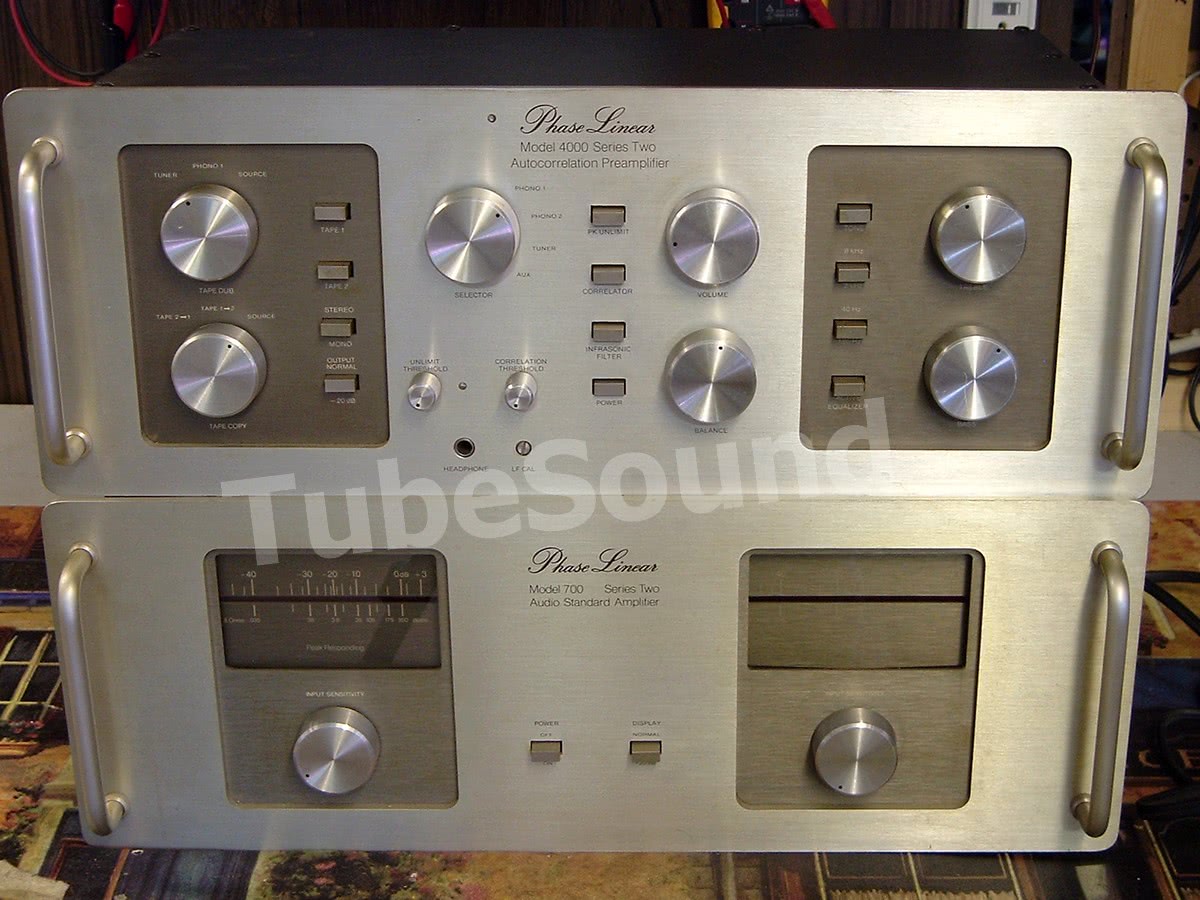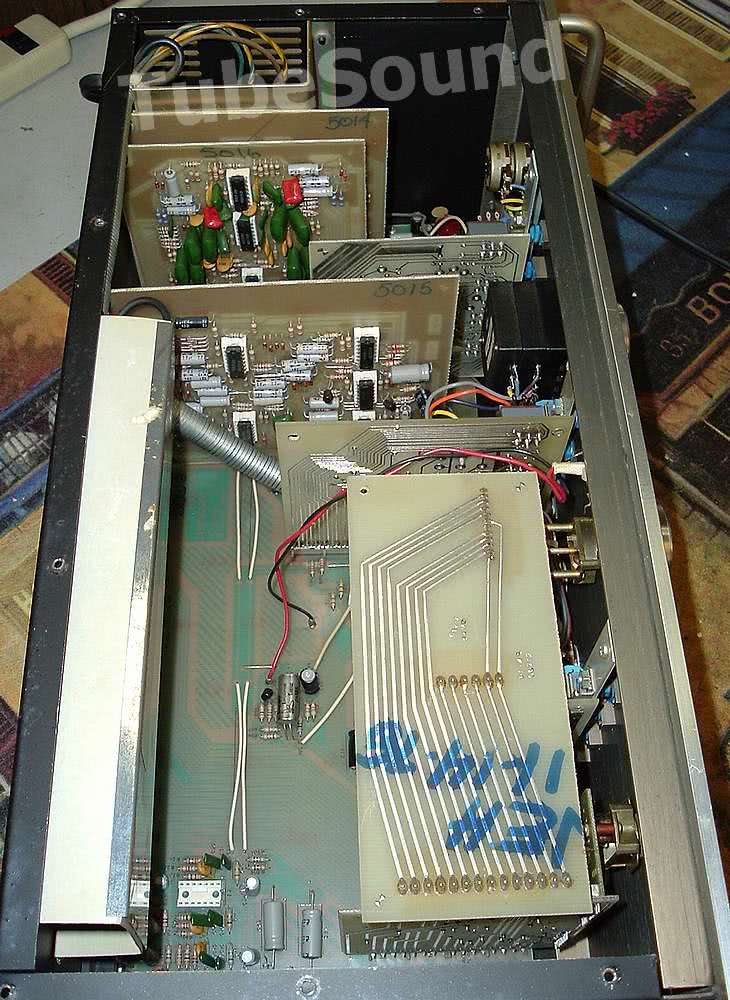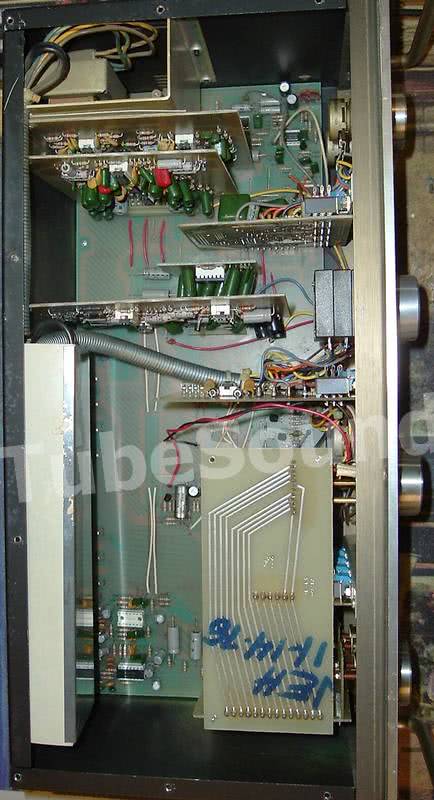Here is something that I don’t see everyday… Phase Linear audiophile gear! In fact, this was my first opportunity to use, repair, and evaluate any Phase Linear gear.

While I only use tube audio gear, it is hard to argue with the exceptional quality of a premium audiophile solid-state amplifier such as this Phase Linear 700 Series Two. It makes me want to reconsider tube audio …at least for a day or two!
I agreed to tackle this Phase Linear gear for my neighbor, even though I do not typically service solid state gear. He had originally purchased this pair brand new back in 1979 — a Phase Linear 700 Series Two amplifier, and complimentary Phase Linear 4000 Series Two autocorrelation preamplifier. Both units had defects. My good buddy Donnie and I spent most of entire day working on this gear.
First on the bench was the preamp. It had a variety of issues. Noisy controls were a big problem. Then we noticed an intermittent noise/squawk that even caused a microphonic type of symptom. The problem was in a variety of areas: (1) poor contacts between the plug-in boards, (2) bad solder joints on the main board, and (3) a never-soldered-from-the-factory capacitor (that was probably for decoupling.) After tracking all of these problems down, the preamp shaped up nicely. That said, one issue remains — a defective “Phono #2” input IC chip, RC4739DB. We found a cross-reference in a Sams manual, but the substitute absolutely would not work. It overheated immediately, and after trying several of these chips, we came to the conclusion that either the original chip was different, or there was a misprint in the Sams substitute book. Thus, we must buy the original part number to replace it. (Update 07-06-2012: new IC arrived and fixed the Phono #2 input). This preamp uses quite a number of these RC4739DB chips throughout its circuitry.
A final thought about the preamp — the preamp uses a ton of original Japanese gray electrolytic caps, and vintage Japanese electrolytic caps are known for failures. It will cost some serious money (tech time) to replace them, but they are fine as of now. Many of these caps are branded ELNA (Japan), and others are branded “nlc”. There are also some electrolytics that were made in Korea and have similar construction as the Japanese caps. Additional photos of the preamp are at the end of this article.
[Update: Jan 2013 — this preamp developed another background noise issue in one channel, which was tracked down to poor continuity in the contacts of the headphone jack, which has normally-closed contacts inside when headphones are not in use. Lesson — diligently clean the headphone jack.]





Second, we tackled the power amp — PL 700 Series 2. This amp is a real beast and truly kicks ass. The problem was that it was blowing fuses in one channel. The defect was two shorted output transistors, factory part number XPL909 / FR909. I could not find these transistors in any substitutes books, but the owner had paperwork from 1992 where he had the amp serviced, and the previous tech had installed a pair of 2SD555 power transistors in the other channel. Since the pair of 2SD555 lasted 20 years in the other channel, we went with the same choice and with equally great results.
Finding the shorted transistors was a pain, though. The amp uses 12 power transistors per channel (2 driver, 10 output), mounted on huge narrow heat sinks, and the output transistors use 0.33Ω emitter resistors and the collectors tied together. I do not know of any easy way to find the shorted transistor(s) in such a configuration, so we pulled each transistor, tested it with ohmmeter, and checked to see if the shorted condition was alleviated, thereby knowing that we found all shorted transistors in that channel. As it turned out, 2 of the 12 were shorted, and we had to pull 10 of them before the shorted condition was resolved. As noted, the new 2SD555 transistors installed fine and without beta matching issues.
[Update 05-29-2013:] — the 700-II developed a new problem, left channel went out. Problem was traced to a 7.5k 2W resistor that had opened up on the main PL36 circuit board. No visible signs of distress. I replaced the 7.5K resistor and accompanying components (2.7k resistor and 47uf capacitor). Checked the right channel, and its 7.5k resistor had drifted up to almost 12k, so I replaced the same three components in that channel.
I cleaned the bias pots and reset the bias after 30 minutes of idle warmup.
Next time I’m working on this amp, I will replace the 15v zener diodes. I did not have any in stock, or I would have replaced them now. They look cooked but are still working fine.
Performance of this power amp is truly amazing. It easily drove 400 watts without a sweat (which was beyond the limits of our audio loads), and distortion levels for IM and THD were both down in the mud, well below the measurement capability of the vintage Heathkit IM and THD distortion analyzers. Frequency response was flat from 6hz (as low as we can measure) to 22khz, and with only the slightest of drop from 22khz to 40khz. Truly outstanding amp that represents how excellent solid-state audio can be. The amp is a power hog, though, and will easily sag your line voltage due to its massive power consumption, which reached 1200 watts when driving high output. The amp has no speaker protection built-in, so I would strongly advise fusing the speakers unless you want them to become “Flame Linear”!
